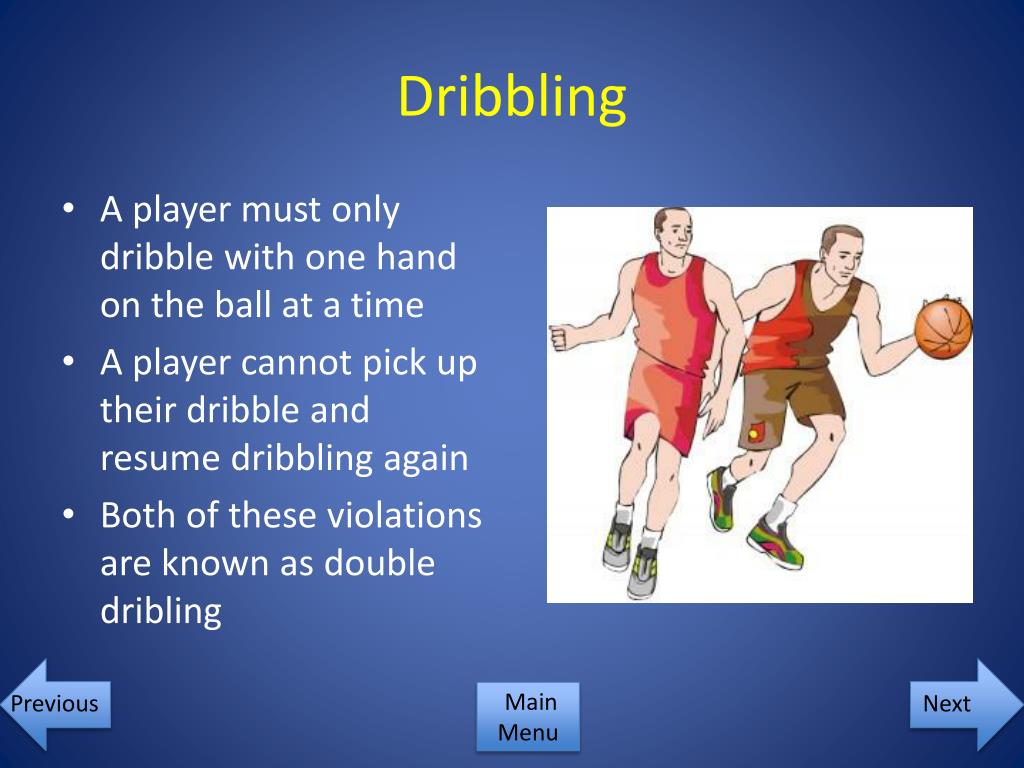Home »
Misc »
How many rules are in basketball today
How many rules are in basketball today
Original 13 Rules of Basketball
Dr. James Naismith's Original 13 Rules of Basketball
Check out the basketball rules that originally were published on Jan. 15, 1892, in the Springfield College school newspaper, The Triangle.
Dr. James Naismith's Original 13 Rules of Basketball
1. The ball may be thrown in any direction with one or both hands.
2. The ball may be batted in any direction with one or both hands (never with the fist).
3. A player cannot run with the ball. The player must throw it from the spot on which he catches it, allowance to be made for a man who catches the ball when running at a good speed if he tries to stop.
4. The ball must be held in or between the hands; the arms or body must not be used for holding it.
5. No shouldering, holding, pushing, tripping, or striking in any way the person of an opponent shall be allowed; the first infringement of this rule by any player shall count as a foul, the second shall disqualify him until the next goal is made, or, if there was evident intent to injure the person, for the whole of the game, no substitute allowed.![]()
6. A foul is striking at the ball with the fist, violation of Rules 3,4, and such as described in Rule 5.
7. If either side makes three consecutive fouls, it shall count a goal for the opponents (consecutive means without the opponents in the mean time making a foul).
8. A goal shall be made when the ball is thrown or batted from the grounds into the basket and stays there, providing those defending the goal do not touch or disturb the goal. If the ball rests on the edges, and the opponent moves the basket, it shall count as a goal.
9. When the ball goes out of bounds, it shall be thrown into the field of play by the person first touching it. In case of a dispute, the umpire shall throw it straight into the field. The thrower-in is allowed five seconds; if he holds it longer, it shall go to the opponent. If any side persists in delaying the game, the umpire shall call a foul on that side.
10. The umpire shall be judge of the men and shall note the fouls and notify the referee when three consecutive fouls have been made. He shall have power to disqualify men according to Rule 5.
He shall have power to disqualify men according to Rule 5.
11. The referee shall be judge of the ball and shall decide when the ball is in play, in bounds, to which side it belongs, and shall keep the time. He shall decide when a goal has been made, and keep account of the goals with any other duties that are usually performed by a referee.
12. The time shall be two 15-minute halves, with five minutes' rest between.
13. The side making the most goals in that time shall be declared the winner. In case of a draw, the game may, by agreement of the captains, be continued until another goal is made.
Note: Basketball was originally two words. These original rules were published Jan. 15, 1892, in the Springfield College school newspaper, The Triangle.
Basketball Rules List
Home>Sports>Basketball>Basketball Rules
PreviousNext
There are many rules that make basketball the sport that it is today. They include:
- Scoring Rules
- Dribbling Rules
- Traveling Rule
- Carrying Rule
- Double Dribble Rule
- 8-Second Backcourt Rule
- 3-Second Paint Rule
- Out of Bounds Rules
- Free Throw Rules
- Number of Players rule
- Substitution Rules
- Physical Contact Rules
- Goaltending Rules
Table of Contents
- Scoring Rules
- Dribbling Rules
- Traveling Rule
- Carrying Rule
- Double Dribble Rule
- 8-Second Backcourt Rule
- 3-Second Paint Rule
- Out of Bounds Rule
- Free Throw Rules
- Number of Players Rule
- Substitution Rules
- Physical Contact Rules
- Goaltending Rule
Scoring Rules
In basketball a point is worth two points or three points depending on the location of the shot. Any shot taken from on or within the 3-point line is worth two points. Any shot taken from outside the three-point arc is worth three points. On free throws, a successful basket is worth one point.
Any shot taken from on or within the 3-point line is worth two points. Any shot taken from outside the three-point arc is worth three points. On free throws, a successful basket is worth one point.
Dribbling Rules
In order for a player to move with the ball in their possession, they must dribble the ball. Dribbling is when a player bounces the ball on the court in a continuous motion with one hand. The player must keep a live dribble at all times in order to move with the basketball. If the ball is knocked from the player’s possession when they are dribbling then they are allowed to resume dribbling if they get it back.
Traveling Rule
A travel is when a player who has possession of the ball moves without dribbling the ball. Traveling is most common with players going for a contested layup or players who try to create space to take a jump shot. A player may take at most two steps without dribbling the basketball, but they must be moving with the intention to score.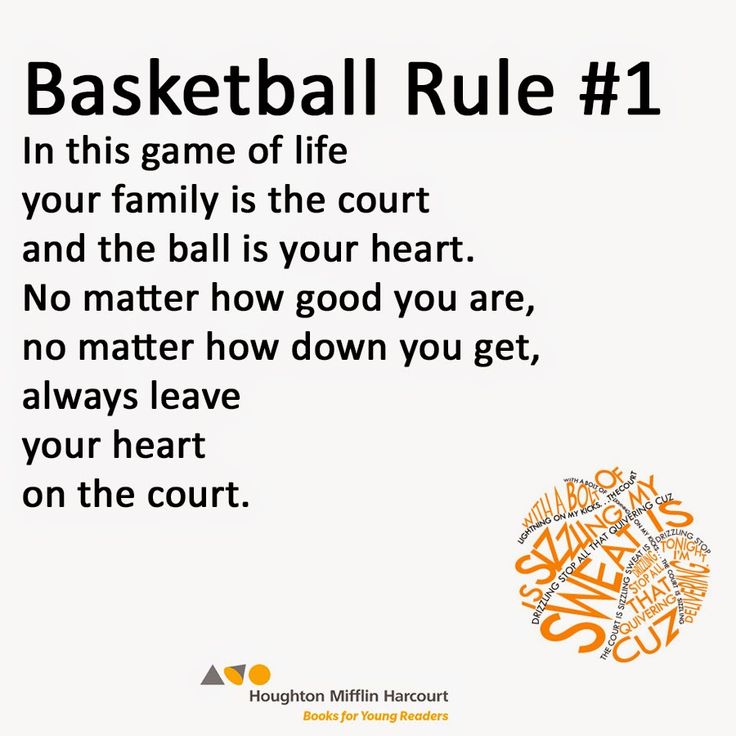
Carrying Rule
A carry is when a player either palms the ball, their hand gathers the ball from underneath the ball or their forearm is able to carry the ball and pause then continue their dribble.
Double Dribble Rule
A double-dribble is when a player ends their dribble and picks it up again to continue their dribble without passing, shooting or losing possession of the ball.
8-Second Backcourt Rule
When dribbling the ball up the court a player has 8 seconds to get the ball beyond the half court line, if they fail to do this then it results in a backcourt violation. If a team has already moved the ball into the front court they can not go back and pass the ball into the backcourt. If there is a loose ball and a player touches the ball and causes it to go into the backcourt, they are not allowed to be the first one to touch the ball if the ball was in their control.
3-Second Paint Rule
A three seconds violation occurs when a player stays in the paint for longer than three seconds. There are two variations of this penalty, one being on offense and the other is on defense.
There are two variations of this penalty, one being on offense and the other is on defense.
Offensive 3-Second rule
An offensive three seconds violation occurs when a player is in the paint for longer than three seconds. However, if a player is in the act of shooting during the third second then it is completely legal and no penalty shall be applied. The three second count cannot begin until the team is in full control of the ball.
Defensive 3-Second rule
A defensive three seconds violation has the same rules that apply. However, in this case the rule doesn’t apply if the defender is actively guarding someone who is close to the paint. Also, the count does not begin until the offensive team advances the ball into the front court.
Out of Bounds Rule
If a player steps out of bounds in any direction then they lose possession of the ball. The ball is considered dead and must be put back into play with a throw-in. If the ball itself goes out of bounds, whichever team touches it last the opposing team is granted possession of the ball. If a player touches the ball and saves it from going out of bounds, they are not allowed to be the first person to touch the ball even if they have regained position within the boundaries of the court, this incident will also result in a turnover.
If a player touches the ball and saves it from going out of bounds, they are not allowed to be the first person to touch the ball even if they have regained position within the boundaries of the court, this incident will also result in a turnover.
Free Throw Rules
A free-throw is a shot that is given to a player as an opportunity to score one point due to a foul from the other team. The player must shoot from the free-throw line which is 15 feet from the basket. If the basket is made, that team is awarded 1 point.
When shooting a free throw a player has less than ten seconds to take their shot or else their shot will not be counted and they will forfeit their chance to take a free throw shot. A player is not allowed to step over the free throw line when they take their shot or else their shot will not be counted, even if the shot goes in. Also, a player is not allowed to fake a free throw shot on purpose. The free throw shooter is not allowed to purposely throw the basketball off the back of the backboard in order to catch it and regain possession of the ball, that is considered a violation.
Number of Players Rule
Both teams are allowed to have five players on the court at any given time. This ensures that each player on the opposing team is able to match up properly with another player on the other team. Given this dynamic, it allows for fair play for each team to play the sport on an equal playing field.
Substitution Rules
Players can leave the court and be substituted for another player on the bench. This happens relatively often throughout the course of a game to give a player a much needed rest. There is no limit to how many times a player can be substituted during a game, so this allows for different matchups and in-game rotation strategies to be used by coaches.
A foul occurs when a player comes into illegal contact with another player on the opposing team. Examples of illegal contact include personal fouls, shooting fouls, illegal screens, charging, and blocking fouls. Players are not allowed to hit, hold, or push other players.
Goaltending Rule
Goaltending happens when a defensive player touches the ball when it is above the rim, on the rim, or if the shot is on its way down and the player blocks the ball from entering the rim. It is also considered goaltending if a player touches the ball after it has been shot and has touched any part of the backboard above the rim and appears to have a chance of going down.
It is also considered goaltending if a player touches the ball after it has been shot and has touched any part of the backboard above the rim and appears to have a chance of going down.
PreviousNext
Pages Related to Basketball Rules List
- Basketball Shot Clock
- Basketball Salary Cap
- Basketball Shot Clock Violation
- Basketball Quarters
- Basketball Pushing Rules
- Basketball Rim Height
PreviousNext
Rules of Basketball
How the rules have changed in your favorite game
How the rules have changed in your favorite game
WE ALL LOVE TO PLAY BASKETBALL, BUT DO YOU KNOW THE RULES EXACTLY?
Basketball was invented by James Naismith in 1891. Then everything was different: playgrounds, baskets, balls…
!!! Read about the evolution of balls in the article:
Basketball was invented by James Naismith in 1891. Then everything was different: playgrounds, baskets, balls…
!!! Read about the evolution of balls in the article:
The history of basketballs
The history of basketballs
What balls are played now and how it happened
The beginning
The rules have also changed a lot during this time. Initially, there were only 13 of them in basketball:
Initially, there were only 13 of them in basketball:
- The ball can be thrown in any direction with one or two hands.
- The ball may be hit with one or both hands in any direction, but never with the fist.
- The player cannot run with the ball. The player must throw the ball from the point at which he caught it, except for a player running at high speed.
- The ball must be held with the hands. You can not use the forearms and body to hold the ball.
- In any case, hitting, grabbing, holding and pushing the opponent is not allowed. The first violation of this rule by any player shall be called a foul; the second foul disqualifies him until the next ball is scored, and if there was an obvious intention to injure the player, then a disqualification for the entire game. It is not allowed to replace a disqualified player.
- Punching the ball is a violation of points 2 and 4, the penalty is described in point 5.

- commit no foul).
- A point is scored if a ball thrown or bouncing off the floor hits the basket and stays there. Defending players are not allowed to touch the ball or basket while shooting. If the ball touches the edge and the opponents move the basket, then a point is scored.
- If the ball goes out of bounds, it must be dropped into the field by the first player to touch it. In the event of a dispute, the referee must throw the ball into the field. The thrower is allowed to hold the ball for five seconds. If he holds it longer, then the ball is given to the opponent. If either side tries to play for time, the referee must give them a foul.
- The referee must monitor the actions of the players and fouls, and notify the referee of three consecutive fouls. He shall have the power to disqualify players under rule 5.
- The referee must watch the ball and determine when the ball is in play (inbounds) and when it goes out of bounds (out of bounds), which side should be in possession of the ball, and any other action that the referee would normally take .

- The game consists of two halves of 15 minutes each with a break of 5 minutes between them.
- The side with the most goals during this time period is the winner.
The most important rule change in the history of basketball is the introduction of dribbling. In the original version of the game, this was prohibited by paragraph 3 of the rules.
One of the first changes in the game and the rules was the replacement of the basket with a ring with a net. It seemed to be very inconvenient to climb after the ball every time after a hit. Around the same time, free throws, dribbling appeared, and the composition of the teams was fixed for 5 players on the court at the same time. Before that, in some matches, up to 50 people could be on the court at the same time. All this happened back in 1896-1897.
The emergence of FIBA (International Basketball Federation)
Basketball in the early 20th century became more popular and the rules in each country could be different. This was one of the reasons why FIBA appeared in 1932 year. At the first FIBA Congress, the teams were approved (5 people and 2 substitutes), and it was decided that after each goal there would be a throw-in in the center. This rule was removed after 4 years to reduce the advantage of tall players.
This was one of the reasons why FIBA appeared in 1932 year. At the first FIBA Congress, the teams were approved (5 people and 2 substitutes), and it was decided that after each goal there would be a throw-in in the center. This rule was removed after 4 years to reduce the advantage of tall players.
Over the next few years, the main changes were related to the number of personal fouls, the number of players on the bench and the introduction of a time limit for getting the ball into the opponent's half of the court.
More changes came in 1952 after the Olympics. The game became very boring, because the teams held the ball, having received a minimal lead in the score. Everyone understood this and searched for solutions for several years in order to save the life of basketball. At 1954 Danny Biason proposed to the NBA to limit the time for the shot to 24 seconds. At the 1956 Olympics, there was a similar rule: it was necessary to make a throw in 30 seconds. At the same time, to add equality between defense and attack, another rule familiar to us appeared: you need to start dribbling the ball before the supporting leg comes off.
Then the game became similar to the modern one from a technical point of view: dribbling, shots, a three-second zone appeared. In 1979, the NBA added a three-point line, and in 19In 1984, FIBA also added an arc.
!!! An article about the evolution of the three-point shot and interesting facts:
10 interesting facts about the three-point shot.
10 interesting facts about the three-point shot.
Three-pointer evolution and insane records.
Changes in the rules and basketball since 1956 have included the number of free kicks, the situations in which these free kicks are given, and individual and team penalties. Some rules were introduced, and a few years later they were canceled. For example, the "3 for 2" rule: if a player was fouled in the shooting phase, then if one of the first two shots was missed, he could make another free throw. This rule was later removed.
Since the 1990s there have been constant changes: the emergence of alley-oops, changes in the timing and rewriting of the rules of running, which continue to this day.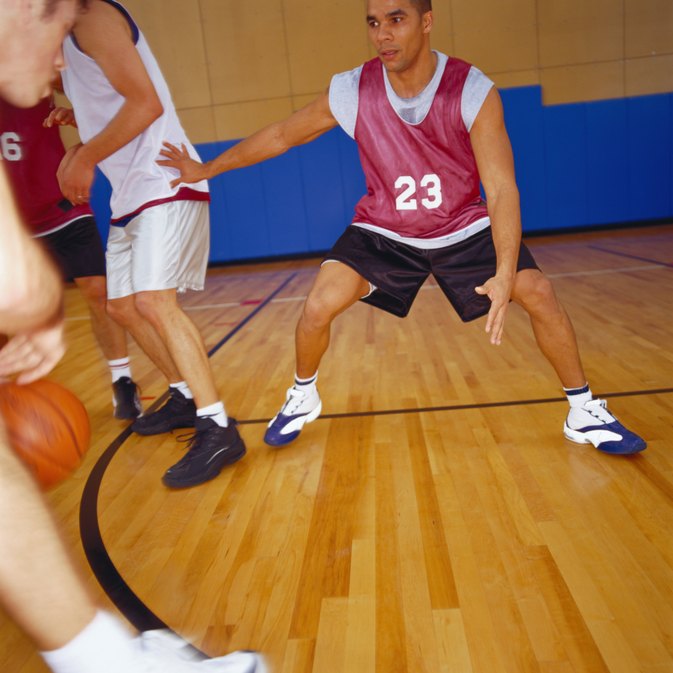
From the most interesting: if the team has 0.3 seconds or less to throw the ball from behind, then it must be a one-touch throw. It takes at least 0.4 seconds to perform a full throw.
Derrick Fisher made similar throws:
And here is a small selection of videos of how they throw in 0.2 seconds:
Do you want to take your first steps in basketball or improve your basic skills? We have a Basic Basketball Skills workout for you. See the schedule and sign up:
SIGN UP
Coach: Yuriy Bespalov
- Professional player of the INANOMO 3x3 team;
- Champion of Russia 3x3 2019, 2021;
- Winner and medalist of the MOFB championship;
- MLBL Summer League MVP 2017;
- Multiple participant of Moscow Open;
- Champion of Moscow 3x3 2017;
- MVP GrunisCup 2017.
IF YOU LIKE THIS ARTICLE, DON'T FORGET TO SHARE IT WITH YOUR FRIENDS.
MORE ARTICLES FROM
BLOG
We write useful articles about basketball training, basketball shoes and everything related to this beautiful game.
Basketball in Moscow in winter
Free throw in basketball: technique and secrets of execution
Passes in basketball: basic types and technique of execution
Basketball terms everyone should know
How to increase the jump? 5 tips
9 definitions, which each basketball player
#is
in social networks:
Basketball Rules - Sports Fan
is one of the most popular sports in the world. Everyone who is interested in this sport should understand and know the rules of basketball . The rules in basketball throughout the history of the development of sports have changed and supplemented. In our article, we will talk about the current official FIBA rules.
Two teams take part in the game. The goal of each team is to throw the maximum number of times the basketball into the opponent's basket and at the same time prevent the opponent from taking possession of the ball and throwing it into their own basket. The height of the basket (basketball hoop) is 3.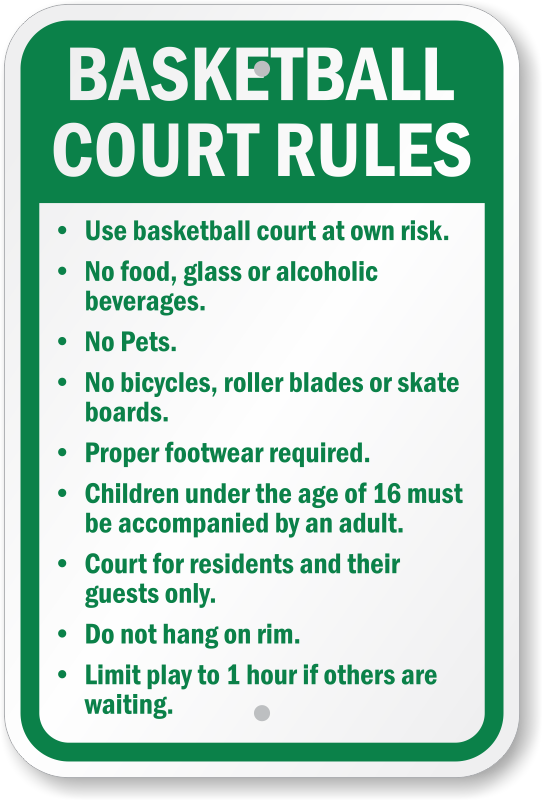 05 meters from the site.
05 meters from the site.
A different number of points are scored for each goal scored from different distances.
From middle and close distances - 2 points, for throwing the ball from a long distance the team gets 3 points, and from a penalty kick the team gets 1 point. The basketball court is 15 meters wide and 28 meters long.
A basketball game starts with a throw-in in the center of the field. As soon as one of the players has touched the ball, the countdown begins. A separate judge, “timekeeper”, monitors the timekeeping. His powers include stopping time on a whistle and resuming it. The match consists of 4 periods of 10 minutes each. Breaks between periods are 15 minutes.
Three-Point Zone
Each team has only 24 seconds to attack. At the same time, there is also a “three-second zone”. The “3-second zone” is the zone of the opponent, in which a player of the team who attacks no more than 3 seconds in a row can be located. There are also such rules as "Five seconds" and "Eight seconds". The Eight Second Rule is a rule that restricts the actions of one's team in the backcourt. When receiving the ball in the backcourt, the team has 8 seconds to transfer the ball to the frontcourt, i.e. essentially launch an attack. The Five Second Rule is a rule that restricts a player from passing the ball, as long as he is closely guarded.
The Eight Second Rule is a rule that restricts the actions of one's team in the backcourt. When receiving the ball in the backcourt, the team has 8 seconds to transfer the ball to the frontcourt, i.e. essentially launch an attack. The Five Second Rule is a rule that restricts a player from passing the ball, as long as he is closely guarded.
A tie in basketball is not allowed. In this case, additional or additional overtime is assigned until one of the teams can take the lead. Each overtime is 5 minutes long.
During the game, there are moments when opponents, both players from different teams, hold the ball with both hands and do not concede to each other. This moment is called controversial. Such a moment is allowed by throwing the ball between these players.
Out is when the basketball is out of court. Out means putting the ball into play after it has been determined from which player of the team the ball came out. If it is not possible to determine, the ball is considered dropped and put into play by a throw-in.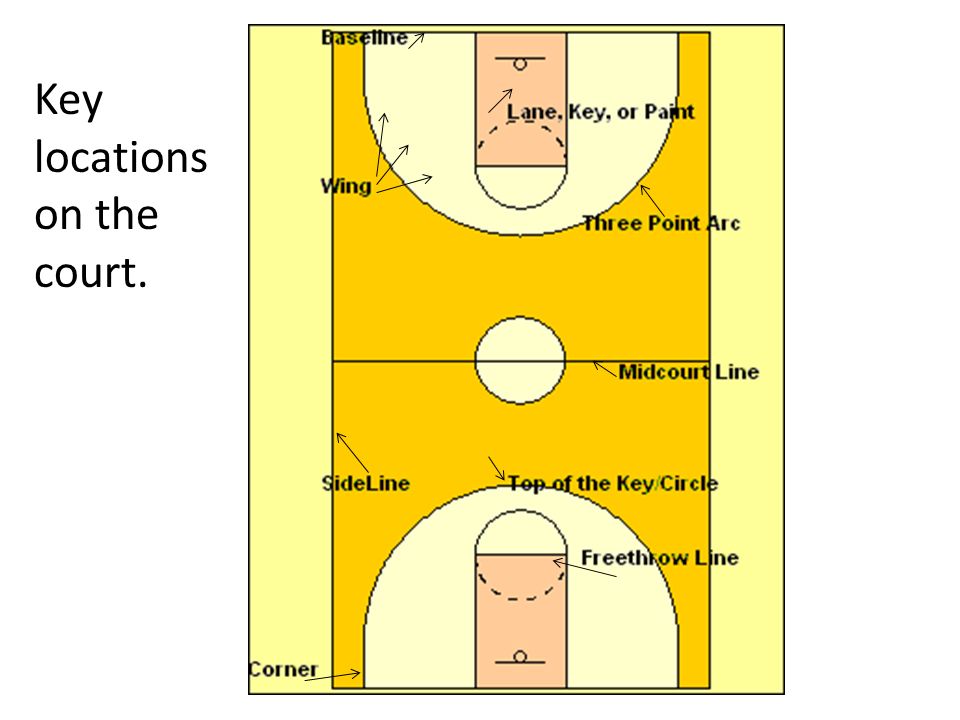 The ball goes to the team from which the ball did not go out.
The ball goes to the team from which the ball did not go out.
During the game of basketball, the technique of dribbling is clearly observed. The rules have their limits here. So, after dribbling, the player is allowed to take only two steps with the ball in his hands, while not hitting the ball on the floor. The player must pass this ball either to a partner or throw it around the ring. If the player continues to move, this is again a violation and is called "double dribble". In both cases described above, the offense is punished by passing the ball to the opponent.
Dribble Rules
If the player does not fix the ball, but continues to tap it on the floor, while being motionless, and after 3 or 4 seconds continues to move, then no violations are seen. Throwing the ball in with both hands is prohibited, as well as hitting the ball with a fist. You can dribble with either your right or left hand. In case of violation of dribbling - the punishment is the transfer of the ball to the opponent.
Replacements. Substitutions in the game are possible when the game is stopped. The number of substitutions is not limited. As a rule, there are 7 players on the bench.
Basketball is an emotional and inspiring game. Naturally, this game is not complete without brawls and fights. For such violations, a technical foul is assigned and is punished with a free throw from 6 meters. A free throw can be taken by both the injured person and a teammate.
If there was a fight, then this is a serious violation and it is punished by disqualification of the player until the end of the game, but with the right to substitute.
In general, there are many skirmishes and fouls during the game. For each foul the player is given a warning. A player can receive no more than 5 warnings per game. After that, the player is disqualified until the end of the game, but again, with the right to substitute.
During the game, the referees communicate using gestures.